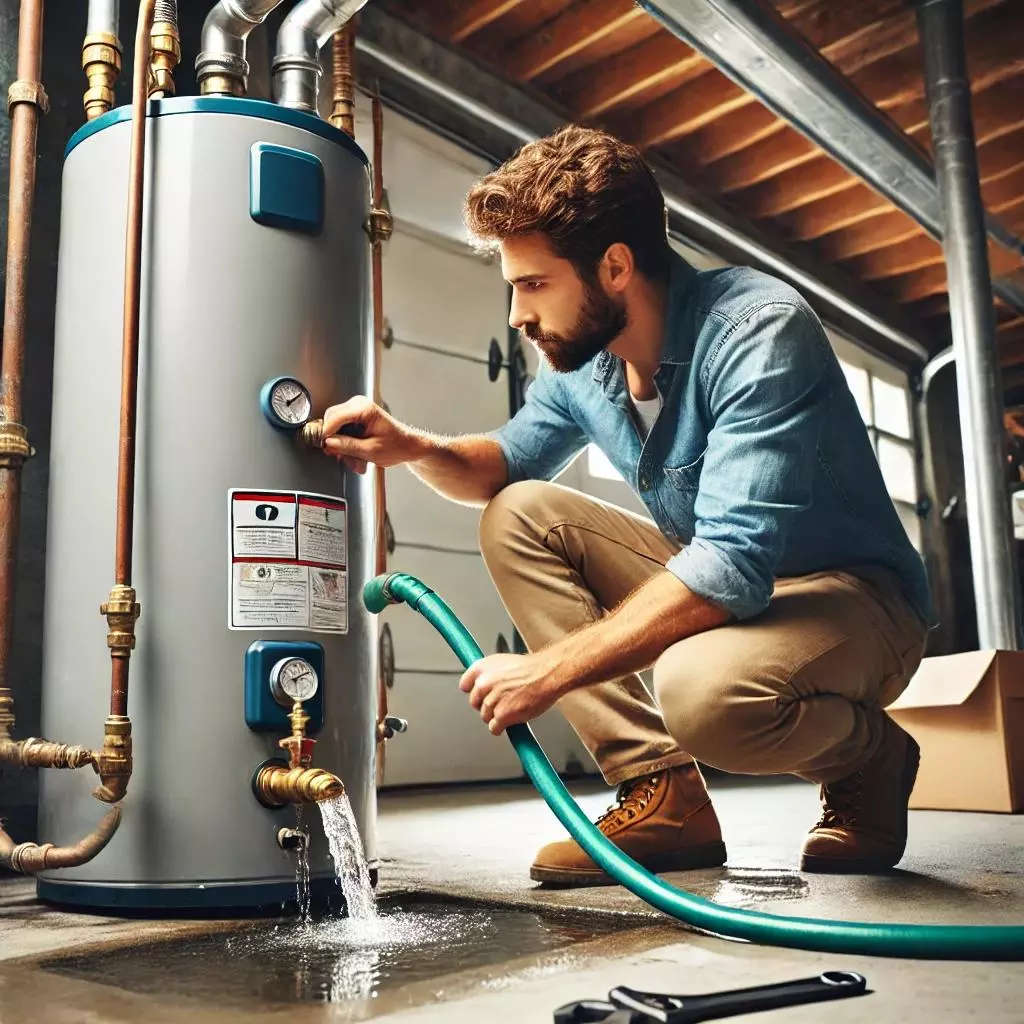Why You Should Flush Your Water Heater This January

Las Vegas homeowners may not have to worry about frozen pipes or gutters, but there’s one winter maintenance task that often gets overlooked—flushing your water heater. Hard water is a fact of life in our desert climate, and over time, minerals like calcium and magnesium build up in your water heater’s tank. If left unchecked, this sediment can reduce efficiency, increase your energy bill, and even shorten the lifespan of your unit.
Let’s talk about why flushing your water heater should be at the top of your January home maintenance checklist and how to do it the right way.
Why Flushing Your Water Heater Matters
If you’ve ever noticed your hot water taking longer to heat up or heard a popping or rumbling noise from your tank, that’s likely a sign of sediment buildup. Over time, this layer of mineral deposits makes it harder for your water heater to work efficiently, forcing it to use more energy to keep your water warm.
Some key benefits of flushing your water heater include:
- Better Efficiency – A clean tank heats water faster and uses less energy.
- Longer Lifespan – Removing sediment helps prevent corrosion and extends the life of your unit.
- Improved Water Quality – Sediment buildup can lead to cloudy or discolored hot water.
- Lower Energy Bills – A struggling water heater uses more gas or electricity, driving up costs.
How to Flush Your Water Heater
The good news? Flushing your water heater is a simple task that you can either do yourself or hire a professional for. Here’s a step-by-step guide to getting it done:
-
Turn Off the Power & Water Supply
- If you have a gas water heater, turn the thermostat to “pilot.”
- If it’s electric, switch off the breaker.
- Shut off the cold water supply valve at the top of the heater.
-
Attach a Garden Hose
- Connect one end to the drain valve at the bottom of the tank.
- Place the other end in a safe drainage area (like your yard or a floor drain).
-
Drain the Tank
- Open the drain valve and let the water flow out completely.
- To speed up the process, open a nearby hot water faucet inside your home.
-
Flush Out Sediment
- Once the tank is empty, turn on the cold water supply for a few minutes to flush out remaining sediment.
- Keep an eye on the draining water—when it runs clear, you’re good to go.
-
Refill & Restart
- Close the drain valve and remove the hose.
- Turn the cold water supply back on and let the tank fill up.
- Once full, turn the power or gas back on.
How Often Should You Flush Your Water Heater?
For homes in Las Vegas, where hard water is common, it’s a good idea to flush your water heater at least once a year. If you notice faster sediment buildup or reduced performance, you might want to do it every six months.
Final Thoughts
A little maintenance now can save you from bigger problems (and expenses) later. If you’re not comfortable doing it yourself, a plumber can handle the job quickly and ensure everything is working as it should. Keeping up with this simple home maintenance tip can help you stay warm, save money, and extend the life of one of your home’s most essential appliances.
Thinking about upgrading your home in 2024? Whether you're looking to buy, sell, or just make smart home investments, I can help! Let’s chat about your real estate goals.
Keli James
Real Estate Advisor
Epique Realty
702-265-4323
\kelijameslv@gmail.com
Categories
Recent Posts










